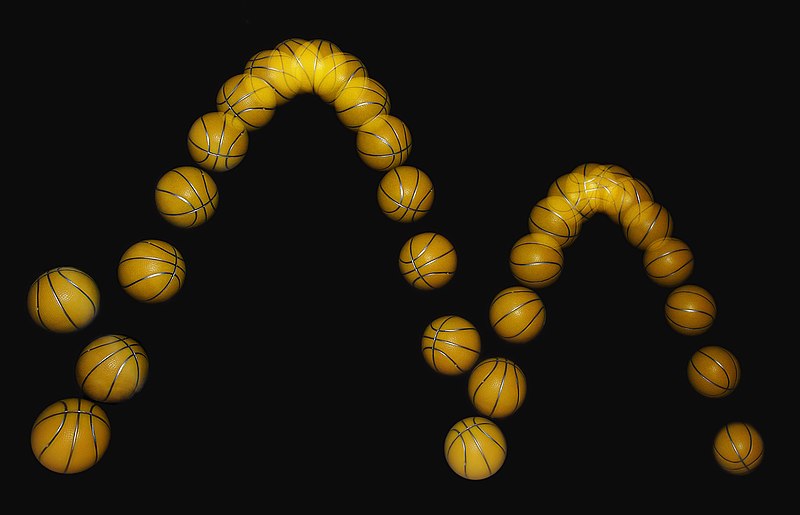ファイル:Bouncing ball strobe edit.jpg

このプレビューのサイズ: 800 × 515 ピクセル。 その他の解像度: 320 × 206 ピクセル | 640 × 412 ピクセル | 1,024 × 659 ピクセル | 1,280 × 824 ピクセル | 1,800 × 1,159 ピクセル。
元のファイル (1,800 × 1,159 ピクセル、ファイルサイズ: 293キロバイト、MIME タイプ: image/jpeg)
ファイルの履歴
過去の版のファイルを表示するには、その版の日時をクリックしてください。
| 日付と時刻 | サムネイル | 寸法 | 利用者 | コメント | |
|---|---|---|---|---|---|
| 現在の版 | 2007年10月8日 (月) 17:27 |  | 1,800 × 1,159 (293キロバイト) | Richard Bartz | {{Information |Description=A bouncing ball captured with a stroboscopic flash at 25 images per second. Note that the ball becomes significantly non-spherical after each bounce, especially after the first. That, along with spin and air-resistance, causes |
ファイルの使用状況
以下の 6 ページがこのファイルを使用しています:
グローバルなファイル使用状況
以下に挙げる他のウィキがこの画像を使っています:
- am.wikipedia.org での使用状況
- ar.wikipedia.org での使用状況
- az.wikipedia.org での使用状況
- ba.wikipedia.org での使用状況
- be.wikipedia.org での使用状況
- bjn.wikipedia.org での使用状況
- bn.wikipedia.org での使用状況
- ca.wikipedia.org での使用状況
- ca.wikibooks.org での使用状況
- ckb.wikipedia.org での使用状況
- cs.wikipedia.org での使用状況
- cv.wikipedia.org での使用状況
- da.wikipedia.org での使用状況
- de.wikipedia.org での使用状況
- de.wiktionary.org での使用状況
- en.wikipedia.org での使用状況
- Parabola
- Newton's laws of motion
- Inelastic collision
- Past
- Stroboscope
- Portal:Science
- Coefficient of restitution
- User talk:MichaelMaggs/Archive/2
- Wikipedia:Featured pictures thumbs/08
- Wikipedia:Featured picture candidates/October-2007
- User talk:MER-C/archives/19
- Wikipedia:Featured picture candidates/Projectile motion
- Wikipedia:Wikipedia Signpost/2007-10-22/Features and admins
- Portal:Physics/2008 Selected pictures
- Wikipedia:Featured pictures/Sciences/Others
- User talk:MER-C/archives/21
- Wikipedia:Picture of the day/February 2008
このファイルのグローバル使用状況を表示する。


